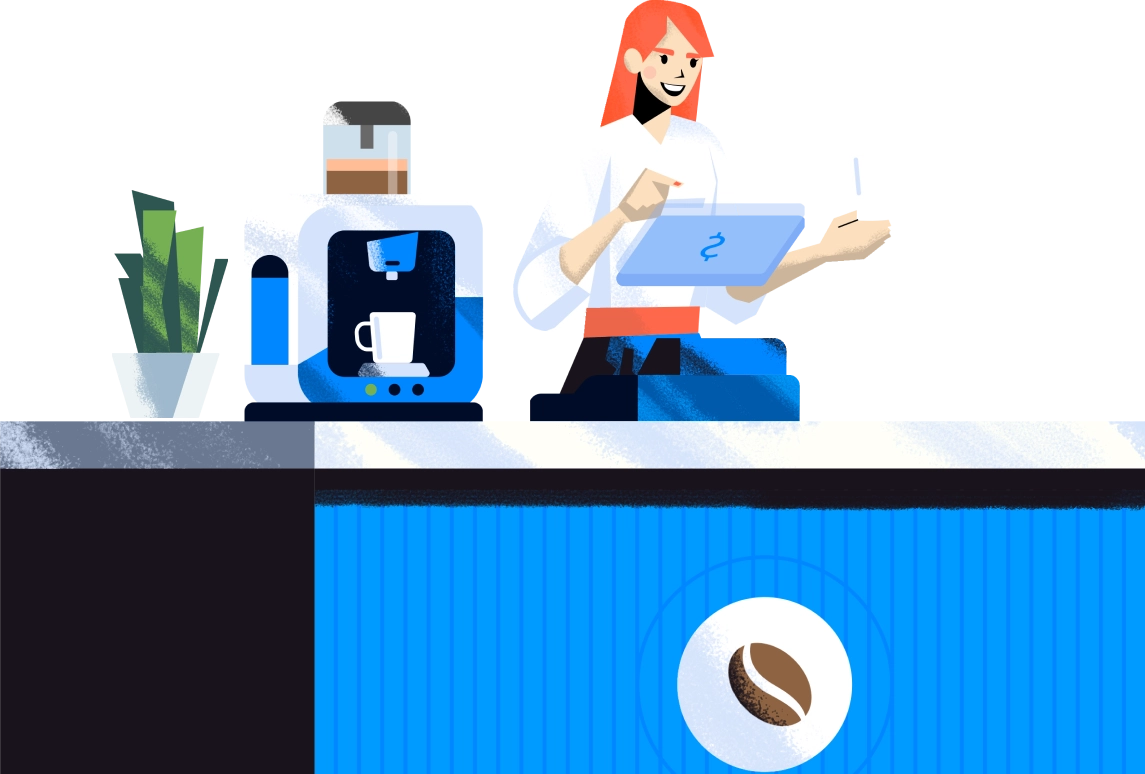After-hours customer service: Support customers while you sleep
After-hours customer service keeps conversations moving while your team sleeps. Learn how AI, smart routing, and MCP-powered automation handle routine questions, surface urgent issues, and reduce morning backlog, so support stays fast, consistent, and revenue-focused 24/7.

After-hours customer service matters because customers expect help whenever they need it, not only during your office hours.
Modern after-hours support solves this problem in a simple way: it keeps your service running while your team sleeps. AI-powered tasks (ran through an MCP) that agents can confirm, AI-powered support ticket routing, and a unified inbox make sure every message gets acknowledged and handled with context. Routine questions are resolved automatically, urgent issues surface instantly, and nothing disappears into the night.
This shift isn’t about automation for its own sake. It’s about building a support operation that matches how global customers behave today. Faster replies, fewer dropped conversations, and smoother overnight handoffs aren’t perks: they’re what keep users engaged, reduce friction during growth, and prevent the slow leak of trust that happens when messages sit unanswered for hours.
By reading this article, here is what you'll get:
- How after-hours support actually works ⏰
- Why overnight coverage reduces backlogs, speeds up replies, and lifts CSAT 📈
- How AI, routing, and centralization keep conversations moving while your team sleeps 💤
- Which channels matter most for 24/7 coverage 💬
- How to create an out of office AI chatbot that avoids chaos 📥
- The KPIs that prove your after-hours strategy is working (FRT, TTR, CSAT, AI resolution, etc.) 💪🏼
Why after-hours customer service matters (and statistics that prove it)
As a support leader in a growing SaaS company or international e-commerce merchant, you're likely missing revenue from after-hours conversations.
After-hours customer service isn't just a voice bot plugged to a phone number. It's a strategic extension of your team, available 24/7. In a global market, 'business hours' don't exist. Support channels like email, phone, connected to a support chatbot software ensure help is available when needed.
For example, AI chatbots answer common questions in under 30 seconds, preventing frustration. This means resolving issues faster, keeping clients engaged, and building trust, even while you sleep.
Viewing this as a cost is a mistake. Missed interactions mean lost leads and damaged brand loyalty.
According to Harvard Business Review, contacting leads within an hour boosts conversion chances by 60 times.
With AI chatbots handling routine queries, you maintain control while reducing support workload. This approach increases CSAT, builds loyalty, and unlocks new business without replacing your team. This strategy reduces time to resolution and improves agent efficiency.
Go beyond availability: build stronger customer relationships while you sleep
Quick after-hours responses prevent customer frustration. When clients receive help at night, they feel valued. AI chatbots acknowledge queries instantly, even at 3 AM, providing accurate answers or escalating to humans when needed. This prevents customers from waiting, ensuring smooth experiences.
For example, a SaaS company saw CSAT jump 15% by responding to midnight tickets. Every second counts in customer satisfaction.
Building stronger relationship means better lifetime value, hence why building after hours customer servie is key to drive retention.
It's not just about building an out of office chatbots that serves customer or leads 24/7, it's about driving more revenue on a longer period. And statistics are here to prove it.
But statistics are nothing without proper execution and an efficient framework. if you have the word from your board of directors, next if to decide where you should get started.
Choosing your channels: the building blocks of 24/7 support
Running 24/7 support isn’t about being everywhere: it’s about choosing channels that actually move conversations forward when your team is offline.
The goal is simple: keep momentum, not create more noise for tomorrow morning when your team wakes up.
Here’s a simple methodology to decide what to activate first.
Step 1 — Map overnight demand (3 buckets that matter)
Before choosing a channel, categorize overnight tickets:
- Repetitive tasks (WISMO, password resets, refunds, account checks)
- Time-sensitive issues (billing failures, access problems, onboarding blockers)
- Critical incidents (fraud, outages, medical/legal issues, logistics failures)
Every decision flows from this map.
Step 2 — Launch the channel that absorbs the largest bucket
AI support chatbot: your night-shift workhorse
📌 Activate first if 60–80% of your overnight volume is repetitive.
This is the first lever almost every SaaS or e-commerce team should pull. The chatbot eats the repetitive work, handles intent, routes messages correctly, and acknowledges everything instantly.
➡️ It’s the fastest way to stop waking up to a wall of tickets.
Step 3 — Add coverage for the exceptions, not the noise
Live chat: the safety valve for real urgency
📌 Activate if you have high-stakes, time-sensitive issues at night.
This channel should be added only when:
- Customers make purchasing decisions outside business hours
- Access issues block product usage
- Payment/billing failures require immediate intervention
A small on-call rotation or external partner handles the 2–5% of interactions that need a human on the spot.
➡️ Everything else falls back to the chatbot.
Step 4 — Stabilize async volume to avoid morning chaos
Email: the overnight backlog that doesn’t become a backlog
📌 Activate if your team struggles to triage email first thing in the morning.
AI-drafted replies, auto-acks, and categorization mean agents start the day with context and pre-sorted messages.
It’s the lowest-effort way to prevent overnight email pileups.
➡️ This is usually step two for smaller teams who aren’t ready for live chat.
Step 5 — Reserve voice for situations where churn risk is highest
Phone: use it where it matters, not everywhere
📌 Activate only if your industry has true emergencies.
Examples:
- fintech fraud alerts
- healthcare/telemedicine concerns
- logistics blockers (missed deliveries, stalled drivers)
- legal/insurance escalations
Phone becomes the red button: only where voice prevents churn or risk.
➡️ You don’t run a call center at 3 AM. You create a path for the critical 1–2% of cases where a human voice actually makes the difference.
One unified inbox, or forget the whole 24/7 idea
None of this works if every channel lives in a separate tool. A unified inbox with full history and customer data sync is what turns overnight interactions into a coherent customer experience. It removes fragmentation, it removes guessing, and it makes handoffs painless. Without centralization, 24/7 support multiplies confusion. With it, your team walks in every morning to organized conversations and clear next steps.
Build an out-of-office AI chatbot to stay responsive without adding headcount
Even with solid channels in place, customers still send messages when your team is offline. An out-of-office AI chatbot acts as your night-shift assistant: it acknowledges messages instantly, collects the essential details, and qualifies conversations while your team sleeps. Instead of arriving to a messy inbox the next morning, agents return to organized, actionable conversations.
What an out-of-office support chatbot actually does
A simple, well-designed flow ensures every message receives a clear and helpful response. It sets expectations, guides the user, and gathers optional information such as order IDs, billing details, or screenshots. Instead of customers waiting in silence, they receive direction and clarity. This eliminates overnight “dead ends” and keeps the conversation on track until a human takes over.
Why it matters for offline coverage
Customers don’t stop needing help when business hours end. A structured response prevents frustration, reassures high-intent visitors, and keeps trust intact. It also guarantees 100% overnight coverage without expanding the team: a critical advantage for lean support teams.
From February to October 2025, they doubled their customer base and handled a 124% increase in monthly support conversations with a single agent. The AI chatbot qualified messages at night, so mornings started with clear priorities rather than a flood of unknowns.
What makes a strong after-hours support experience
A high-quality after hours AI customer support chatbot should:
- Acknowledge the request immediately.
- Point users toward useful resources (help articles, AI answers, forms).
- Collect optional context that accelerates next-day resolution if needed.
- Clearly explain when an agent will reply.
- Maintain a short, warm, human tone.
This simple structure improves the after-hours experience without over-automating or confusing users.
How to create an out-of-office AI chatbot with Crisp
You can build an effective out-of-office sequence in Crisp using a short scenario triggered outside your operating hours:
- Open the Chatbot Builder.
- Add a condition that activates the flow outside your business hours.
- Write your message sequence following this structure: acknowledge → set expectations.
- Add optional questions to collect context (order number, email, issue type).
- Route urgent issues automatically using sub-inboxes.
- Analyze answers provided by the bot and improve answers' snippets to prevent human-fallbacks.
>>> Download the AI KPI Cheatsheet for tracking your AI ROI in your company
How to train the AI on your company’s internal knowledge
For your after-hours chatbot to give accurate answers, you need to connect Crisp AI to the right knowledge sources.
Crisp allows you to train AI using:
- Your previous conversations
- Knowledge base articles
- Internal documents (PDF, CSV, manuals)
- Your website's content (blog article for example)
- Custom Q&A business rules
In the AI Data Hub, you simply add these sources. Crisp aggregates them into a single knowledge layer. During the night, the AI support bot can instantly answer common questions using this data, draft replies, tag priorities, and provide context for the next day.
Crisp AI can also generate next-morning summaries so agents start with a clear view of what happened overnight.
Click here to get a step by step guide to create your after-hours AI chatbots: https://help.crisp.chat/en/article/how-do-i-create-an-out-of-office-responder-chatbot-1ubwvsu/
Go beyond a static AI autoresponder
Most after-hours systems still behave like an answering machine: they acknowledge the message, reassure the user… and stop there. Nothing is resolved. Nothing progresses. The workload simply shifts to the morning.
Model Context Protocol (MCP) changes that completely.
Because MCP lets the AI securely connect to your internal tools: your CRM, order system, billing platform, subscription backend, logistics API, or any custom internal service. It gives the AI the ability to perform real tasks instead of just replying with text.
This means your after-hours assistant can actually do things, not just talk.
With MCP, the AI can:
- Look up an order, delivery, or tracking status directly in your OMS
- Check a subscription, plan, or billing issue through Stripe, Chargebee, or your internal billing API
- Retrieve user data from your CRM or database
- Trigger a workflow in your internal tools (return request, password reset, refund check)
- Create, enrich, or update a ticket with accurate metadata
- Detect issues and escalate only the ones that genuinely require a human
- Maintain consistent behavior across chat, email, WhatsApp, or any channel plugged into Crisp
These are simple tasks, but they unlock massive overnight leverage. Instead of telling customers “we’ll get back to you tomorrow,” MCP allows the AI to solve or pre-solve the issue on the spot, or prepare everything so the human agent can act instantly in the morning.
MCP turns after-hours support from passive queue management into active overnight operations. Your team arrives the next day with fewer repetitive tasks, fewer unknowns, and fewer fires to put out, because the AI actually worked while they slept.
Structuring your after-hours workflow
After-hours support only works when the workflow is intentional. Without structure, night-time conversations pile up, priorities blur, and your team spends the first hour of the day sorting through confusion instead of solving what matters.
Start by designing a routing logic that removes guesswork: messages arriving at night should be automatically sorted by theme, urgency, and customer profile.
- Straightforward questions land in the right inbox.
- Sensitive issues are flagged immediately.
- Everything else is held with the information your agents will need in the morning.
Good routing doesn’t speed up responses, it prevents the wrong ones from slowing your team down.
Next, define levels of complexity so the system knows what it can handle, what it can prepare, and what truly needs a specialist.
- Simple, predictable issues can be resolved automatically or queued with complete context.
- Technical questions move directly to the appropriate team.
- Serious incidents — outages, billing failures, security risks — need their own rules, not the same workflow as a refund request.
Clarity here helps both automation and humans operate with confidence.
Examples of Tier 1: Simple, repeatable issues
- password reset
- order status check (“where is my package?”)
- basic subscription questions (next billing date, plan info)
- promo code not working
- updating profile information
- invoice download requests
- simple product “how do I…” questions
- duplicate charges (verification only, not refunds)
- chatbot-intent questions (opening hours, pricing pages)
These are low-friction tasks that a well-trained AI assistant or MCP-connected workflow handles safely.
Examples of Tier 2: Moderately complex issues
- troubleshooting a feature that behaves differently for different users
- failed payments where root cause isn't obvious
- refunds or returns requiring policy validation
- API or integration issues
- partial outages or degraded performance
- account access issues beyond a password reset
- subscription changes linked to discounts, legacy plans, or promotions
- onboarding blockers requiring multiple data points
- multi-step operational questions (inventory, logistics exceptions)
These are cases AI can prepare: gather information, run MCP lookups, create a structured ticket, but shouldn’t fully resolve without oversight.
Examples of Tier 3: High-stakes or critical issues
(urgent, sensitive, or technically deep)
- full system outage
- payment failures impacting many users at once
- data breach, security alert, or suspicious activity
- failed or stuck orders with financial impact
- legal or compliance-related requests
- VIP customer-critical issues
- fraud detection or account compromise
- infrastructure problems (server down, queues stuck, API failure)
These require an on-call specialist, clear ownership, and strict escalation rules.
Your escalation plan is the backbone of the whole support system. Decide which events justify contacting someone at night, and which should wait until morning. Keep the criteria strict: clear signals, clear owner, clear response time. When done well, escalation becomes rare and meaningful, not another source of noise.
To keep overnight work connected to the daytime team, every interaction should appear where agents already work: your CRM, shared inbox, helpdesk, or internal tooling. Full history, tags, and qualification included. This creates continuity: the team walks in and immediately understands what happened while they were offline.
Finally, treat your after-hours workflow as a living system. When something goes wrong at night (an incident, a misrouted message, an escalation that shouldn’t have happened) review it briefly, adjust one rule, and move on. Small improvements compound quickly and make your system noticeably smoother within a few cycles.
A strong after-hours workflow doesn’t overwhelm teams or pretend to replace them. It creates order, reduces overnight noise, and ensures customers get steady, reliable progress even when your office is closed.
Industries that thrive with after-hours support
After-hours support isn't just for large corporations. Modern tools and hybrid strategies now make it affordable and scalable for growing SMEs. Teams can focus on core tasks while support runs smoothly overnight.
- SaaS companies with global user bases face issues at any hour. A bug discovered by a client in Australia can't wait for US teams to start work. Level 1 and 2 technical support resolves problems quickly. This ensures minimal downtime and higher satisfaction scores.
- E-commerce stores operate 24/7, especially during peak sales. After hours chatbots helps with product recommendations and unfamous "WISMO inquiries".
- Fintech requires immediate help for transaction issues, account blocks, or fraud concerns. Trust is critical. Quick resolutions prevent trust erosion and maintain compliance with strict regulations.
- Plumbers and electricians rely on after-hours support for emergencies. Missing a call means lost revenue. Rapid response builds customer trust and secures new business opportunities. Urgent calls often turn into long-term clients, driving consistent growth.
- Medical and legal practices handle emergencies and critical requests outside regular hours. Support teams ensure nothing slips through the cracks, protecting patient safety and legal compliance. Critical issues can't wait, so immediate response is non-negotiable for trust and safety.
These industries benefit from seamless support that enhances customer experience and drives growth, even when your team is offline. By providing reliable assistance outside business hours, companies build trust, reduce churn, and unlock opportunities without replacing daytime support.
How to measure the success of your after-hours strategy
Slow after-hours responses can quietly damage trust, so measuring the impact of your AI chatbot is essential. The goal isn’t to track everything: it’s to track how the bot is reducing workload, speeding up answers, and improving customer experience.
These are the metrics that matter most:
- First Response Time (FRT): how fast customers get an initial reply at night.
- Time to Resolution (TTR): whether issues are solved faster thanks to overnight triage or automation.
- AI Resolution Rate: the percentage of conversations fully handled by the bot without human intervention.
- CSAT for after-hours interactions: shows whether customers feel supported outside business hours.
- Abandon Rate: how many users drop off before receiving help — a strong indicator of overnight friction.
- Hours Saved via Automation: how much morning backlog the bot eliminates for the team.
- Escalation Quality: whether the bot escalates the right issues and prepares clean cases for agents.
>>> Download the AI KPI Cheatsheet for tracking your AI ROI in your company
FAQ
What exactly is after-hours customer support?
After-hours customer support means providing assistance outside regular business hours—nights, weekends, or holidays. It’s not just about answering calls; it’s about ensuring customers get meaningful help when and where they need it most. For global teams, this bridges time zone gaps and prevents small issues from escalating into bigger problems while your team sleeps.
Think of it as an extension of your support team. A well-designed system handles routine questions automatically, routes urgent matters to on-call staff, and keeps customers informed. This reduces morning backlogs, improves satisfaction scores, and builds trust without overloading your human agents.
Do you offer an after-hours answering service?
Yes, after-hours answering services exist, but they’re not one-size-fits-all. Modern solutions combine AI chatbots for instant replies to common questions, live chat for urgent issues, and email for detailed requests. The key is tailoring it to your team’s capacity—small teams often use smart routing to ensure only critical tickets wake up your agents, while simpler queries get handled by automation.
For example, a fintech startup might use AI to resolve payment questions overnight, while escalating security concerns to a dedicated on-call specialist. This keeps your team focused on high-impact work without sacrificing responsiveness.
What is the 10-5-3 rule in online customer service?
The 10-5-3 rule is a simple guideline for in-person interactions: acknowledge a customer when they’re 10 feet away, smile at 5 feet, and greet them at 3 feet. While it originated in retail, the principle applies to digital support too: respond quickly, show empathy early, and personalize your approach to make customers feel valued from the start.
For example, if an AI chatbot detects a frustrated customer typing "URGENT," it could immediately say, "We see you’re having trouble, let’s fix this together." This small human touch reduces stress and builds trust, even when agents aren’t physically present.
Sources
- Harvard Business Review - The short life of online sales lead - https://hbr.org/2011/03/the-short-life-of-online-sales-leads
- Gartner - Customer support report - https://www.gartner.com/en/customer-service-support







